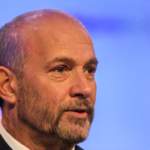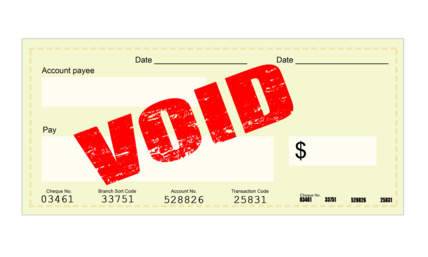7 Tips for Payroll Success
For small business owners, managing the payroll system can be extremely challenging. What should be an efficient and simple process for some smaller businesses, unfortunately, isn’t always a breeze.
If your existing payroll processes aren’t working, now may be the time to make some changes to your business payroll management process or consider outsourcing payroll for your small business.
For many small businesses, managing payroll is done manually, which is fine if you only have a few employees. However, as your business grows and employees are added to the team, old-fashioned, manual methods of recording, tracking, and reporting attendance and time may become overwhelming. Automation may be in your future.
You may simply grow out of your existing payroll management process. But, you can take steps to improve the payroll management process and ensure payroll success. Keep reading to optimize your payroll tasks and simplify your payroll management.

- 1. Consolidate the Payroll System and Pay Schedule
- 2. Go Paperless
- 3. Streamline the Payroll Software in Place
- 4. Use Automation for Your Payroll Systems
- 5. Invest in Payroll Management Training
- 6. Ensure Good Communication
- 7. Set Up Your Payroll Process Properly from the Beginning
- Successfully Managing Payroll Processing
1. Consolidate the Payroll System and Pay Schedule
Some businesses offer different pay schedules for different employees, which can be complicated for bookkeepers or human resources departments. For example, managers may be paid weekly while other employees are paid bi-weekly. Having a consistent payroll schedule is paramount.
While different pay schedules may make sense for a while, they can lead to big errors in your payroll process. It is also going to keep your payroll department from operating as efficiently as it can. Consolidating or minimizing pay cycles will help you avoid duplicating anything and reduce the possibility of errors.
Another step you can take to consolidate systems and pay schedules is to create a payroll calendar. With this, you can feel confident your employees will know when they will be paid and when they should have their time cards turned in.
This type of calendar will also help your payroll staff plan and execute all the payroll-related tasks your HR and payroll departments are in charge of.
A few guidelines to help with your payroll calendar include:
- Use a traditional calendar.
- This will help you determine specific dates that may require a lag for proper payroll processing.
- Implement colored fonts.
- These can help emphasize specific, important information like when timecards are due and employee names.
- Give your managers a copy of the calendar.
- Ensure all supervisors, managers, and department heads have a copy of the calendar to give to their team.
It's important to ensure that your payroll calendar shows all the pay dates during the fiscal year. This will help simplify payment processing and reduce confusion. It will also help ensure that everyone knows when they will receive their paycheck.
Also read: 8 Best Payroll Software To Try In 2021

2. Go Paperless
Opting for a paperless payroll management system is a smart move. A paperless payroll process doesn’t have to be complicated, but it will require some front-end work.
When you get rid of paper, you can save time and resources. It costs (on average) $4 to $20 to issue a paper check. Going paperless can cost savings and more secure company data.
Also, when you transition to electronic payroll systems, it ensures that your team gets their payments promptly and eliminates the possibility of checks getting lost in the mail. Today, most employees prefer digital payments over paper checks.

3. Streamline the Payroll Software in Place
If your current payroll software isn’t compatible with your pre-existing accounting system, it can cause headaches.
If you must use different systems to capture, track, input, and process employee hours, vacation time, or benefits, it will create countless "pain points." Vulnerabilities in the payroll process could lead to mistakes and data loss.
Consider bringing on new staff to alleviate your bookkeeper or HR department. Plus, if you distribute payroll duties among multiple employees, you’re more likely to catch mistakes.
Consider implementing a standard payroll processing manual, which will be helpful for training new employees or picking up the slack if a key employee is absent on payroll processing day.
When you simplify, consolidate, and streamline your current systems, you improve the entire payroll management process. Take some time to evaluate how your current payroll process can be improved and how a new payroll system could help.
Also read: 12 Ways Payroll Data Can Help Your Small Business Save Money

4. Use Automation for Your Payroll Systems
Managing payroll can be a nightmare, and processing payroll is something that takes a lot of time and resources. If you process payroll manually, you can improve your convenience and reduce mistakes. Some possible errors in manual payroll management include:
- Running payroll late
- Not recording paper checks
- Misclassifying an employee
Consider outsourcing payroll to a third party payroll services provider. They have a wider bandwidth to handle payroll tasks and they can handle multiple processes simultaneously.
If you own a growing business with new employees onboarding regularly, keeping up with all payroll processes can be challenging. Luckily, automation and paperless payroll go hand-in-hand.
A valuable investment in automation can help you improve data entry accuracy while helping to reduce the in-house resources and time you spend managing your payroll system and process.

5. Invest in Payroll Management Training
Keeping up with payroll management can be challenging. Things are constantly changing and evolving. There are even changes in state and federal laws related to your business's payroll practices.
You need to ensure your HR team (if you have one) is educated on an ongoing basis regarding the most important parts of their jobs. They should be up to date with the latest technology progresses, HR department shifts and demands, and other things directly related to this industry.
Some of the most important government agency compliance rules that you must abide by include:
Minimum Wage
Today, there is a set federal minimum wage law in place. However, some states, such as New York, require you to pay a higher minimum wage to employees.
Overtime
According to the Fair Labor Standards Act, you must pay overtime if you have an employee who works more than 40 hours a week. All hours worked beyond the 40-hour mark must be compensated with "time and a half."
Exceptions to this law include domestic workers who live with their employer, whose overtime threshold is higher. Also, certain employees will not be eligible for overtime, such as professional workers, computer professionals, and salespeople. Working with a payroll or labor attorney can help you determine who is exempt from overtime and who isn't.
Payroll Taxes
Federal law dictates that you must withhold payroll taxes.
Pay Frequency
Usually, employees are paid every two weeks. However, you may be able to make other arrangements, such as paying monthly, daily, seasonally, or (in some situations) annually or semiannually.
It's worth noting that there are multiple laws related to payroll processing. HR professionals (or anyone who hires your business's payroll) need to keep track of the deduction rules, fully understand the tax procedures, and be able to carry out payroll management smoothly and easily.

6. Ensure Good Communication
It isn't enough just to be good at your job. If you don't engage in consistent and clear communication, your business won't function at its best.
Something that business owners often overlook is providing employees clear, written explanations of procedures and policies. Many businesses are reliant on one-off verbal instructions exclusively.
You should know by now, once isn't ever enough. That's why you must repeat the communications regularly.
Business procedures and systems are known to be inefficient. That's mainly because most of these are not properly documented.
The old saying goes, "if it isn't written down, it's just a rumor." This applies to the procedures and processes you use for business payroll. It is not enough to just make them clear and repeat them often. This is considered an inefficient and unnecessary approach to good communication of payroll procedures. A smart alternative is creating a process manual for payroll. Be sure all employees who handle payroll – on any level – always have access to this manual.
It's also worth noting that payroll management communication goes beyond the HR or payroll department. You or someone associated with this department needs to always be accessible. Employees need to have access to someone they know to talk to with issues or questions related to payroll and the processes used.
With clear and consistent communication, it is possible to eliminate or minimize several payroll problems, such as employee misclassifications and underpaid payroll taxes. The communication needs to include information about:
- Company procedures and processes for handling payroll mistakes
- Employee reporting responsibilities
- How employees are classified
- How the entire payroll process works
If you don't have this done yet, it is a good idea to put your payroll policies in writing and display them in your workplace. Also, you should make sure that each of your employees has a written copy of the policy and processes used.

7. Set Up Your Payroll Process Properly from the Beginning
If you have paid employees, you must manage your payroll tracking and processing. If you don't have an efficient and accurate payroll process, mistakes will occur. Errors can be dangerous both financially and legally; you must adhere to all government regulations, which your HR and payroll professionals should know and understand.
Using the tips here to set your payroll process up properly from the beginning can help you avoid these issues. To ensure you have a quality payroll process in place, ensure that yo’ve accounted for each of the following:
Employee W-4 Forms
IRS form W-4 records the total number of dependents and the allowances that all employees claim to calculate federal withholding. You must have a W-4 form for each of your employees.
State and Federal EIN
The EIN is your Employer Identification Number. Any business with paid employees is required to have this. You can apply for the EIN through the IRS Form SS-4. You can fill it out online, by fax, by mail, or by phone.
Paycheck Calculation
Calculating paychecks depends on your organization's structure. You may pay your employees a monthly salary or hourly rate. Businesses must also consider commissions, piece-rate wages, or tips. No matter your pay structure, you must have a way to track and calculate wages and other payments owed to employees when processing payroll.
You can handle payroll manually; however, this may be time-consuming and prone to mistakes. This is why it is best to hire a third party management company to handle this or to use specific software. With the right software, you can automatically track attendance and time, along with other essential information. You can then use this information to have paychecks calculated each period automatically.
Withholding and Paying Required Taxes
Employers must withhold the proper amount of taxes from each of their employee's paychecks, each pay period. The taxes that have to be paid include Medicare, Social Security, federal and state taxes. Also, a portion has to be paid by the employer for the employee at certain times of the year.
Filing Tax Forms and Submitting W-2s
If you want to ensure that you handle your taxes properly, you need to make sure that you file the proper forms and submit W-2s at the right time. Most employers will have to file the IRS Form 941 and the Employer's Quarterly Federal Tax Return. This will provide information about your FICA taxes and federal income that are withheld or paid during the quarter.
You can easily set up your payroll software to generate all the needed tax filing reports for your business. Implementing automation can help you save time while managing your payroll more accurately and efficiently.
Successfully Managing Payroll Processing
Every business owner must contend with payroll. Luckily, there are tips to help things run smoothly regardless of how many employees you have.
Use the tips and information above to ensure payroll management success and avoid common mistakes. Doing this will pay off and help ensure that your employees are paid properly and that you adhere to all tax requirements and other payroll standards that are in place for your state.
Remember, the payroll process is unique for each business. Still, the management tips above will help all businesses get organized and ensure things are handled properly regardless of size or industry. This is going to simplify your process and help your HR team get more done.
If you need to generate quality paystubs for your businesses, you can utilize the ulimate paystub generator online. Get it now today!















